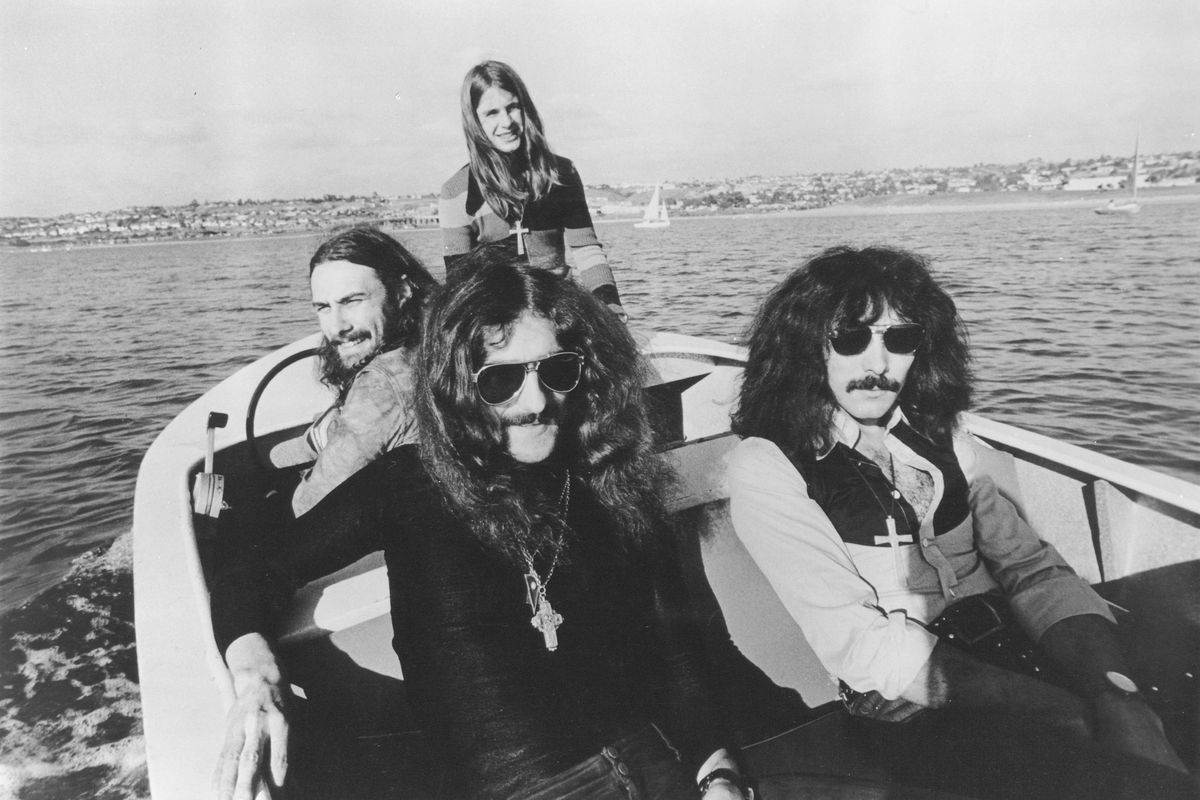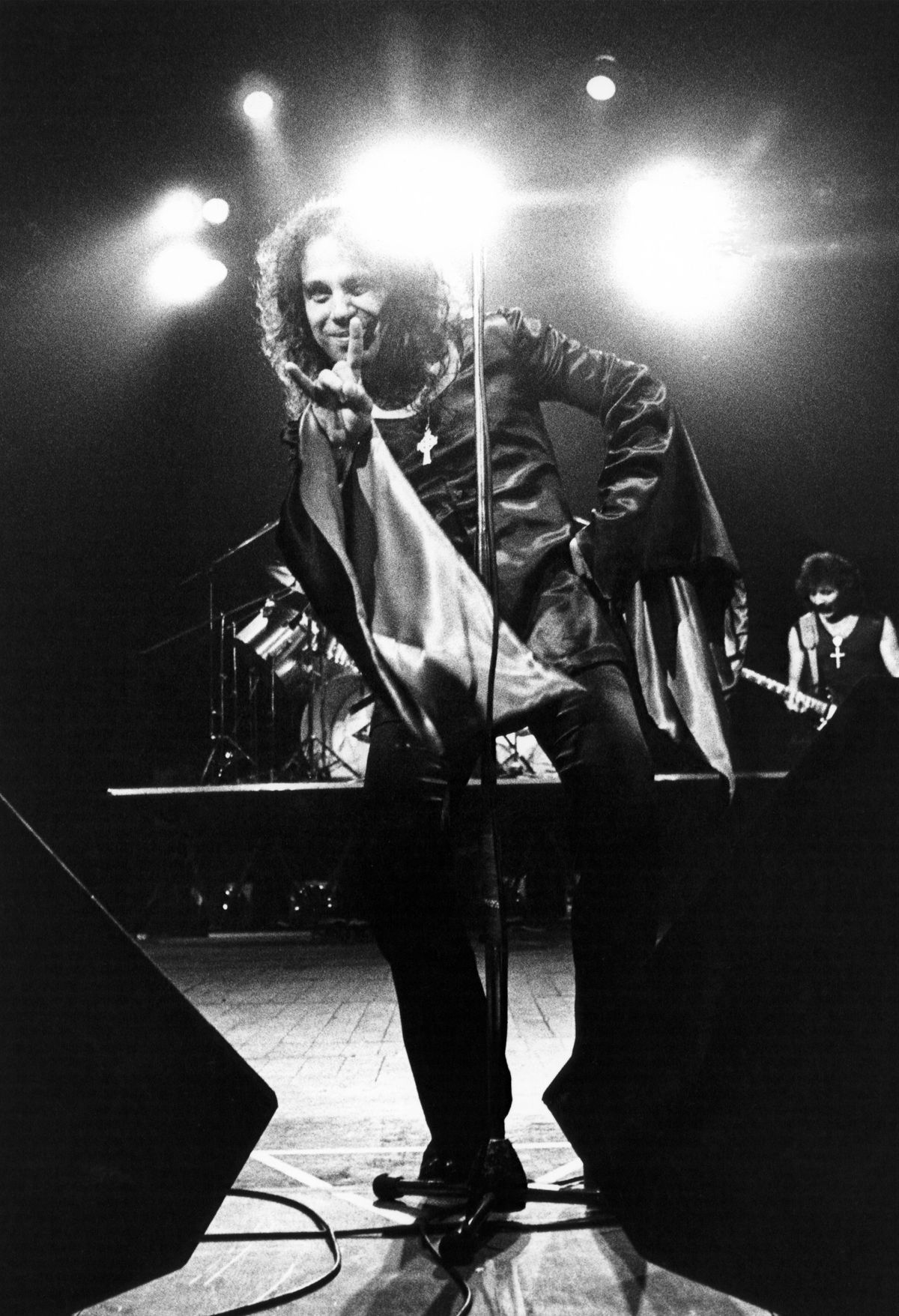Black Sabbath’s rawness, intensity behind band’s power
The early members of Black Sabbath, Ozzy Osbourne, Tony Iommi, Geezer Butler and Bill Ward, are pictured in 1970. (Getty Images)
The future for Black Sabbath looked about as promising as the depressing surroundings of their native industrial dead end of Birmingham, England, when the seminal band released its first album in 1970. The Sabs, who arguably created heavy metal, were critically drubbed by two of the greatest arbiters of musical taste.
Creem’s Lester Bangs reduced the tunes from Sabbath’s eponymous debut album as “stiff recitations of Cream cliches … grinding on and on.” The Village Voice’s Robert Christgau crushed the Sabs. “I’ve been worried something like this was going to happen since the first time I saw a numerology column in an underground newspaper.”
Black Sabbath, which performed the Spokane Coliseum five times between 1970 and 1980, had the last laugh. The metal pioneers, who laid out the blueprint for the genre, are perhaps one of the most influential rock bands in history.
Nirvana, the Melvins, Nine Inch Nails, Smashing Pumpkins, Soundgarden, Jane’s Addiction, Slayer, Metallica and a host of other difference makers acknowledge the impact of the group that was initially known as the Polka Tulk Blues Band.
The simplicity, raw power and intensity are just some of the elements that makes their sludgy, nihilistic rock so appealing.
Tony Iommi’s massive riffs, Geezer Butler’s thunderous bass lines and the muscular drumming by Bill Ward helped make Sabbath a sonic monster.
And then there is vocalist Ozzy Osbourne, who is one of the greatest characters in rock history. Osbourne wasn’t blessed with the greatest set of pipes, but his charisma and showmanship made him into one of the most lovable frontmen in rock history and a hilarious reality show sensation.
It’s easy to see why Sabbath was always so popular in Spokane during its prime. During the first half of the 1970s, the storied band was close to infallible with the release of six stellar albums. 1970’s “Paranoid,” 1972’s “Vol. 4” and 1973’s “Sabbath Bloody Sabbath” scored considerable acclaim, but 1975’s “Sabotage,” which is exceptional, shouldn’t be left out.
Each of those classic albums, among other Sabbath releases have been remastered.
There’s the primal “War Pigs,” the visceral “Iron Man” and there’s even some deep grooves in tunes like “Faeries Wear Boots.”
Sabbath apparently enjoyed Spokane, since it went out of its way to play the Spokane Coliseum, aka the Barn. The Sabs’ local debut, March 14, 1972, happened despite local politicians’ attempt to ban the band from performing.
“City Council tried to stop them because of their song ‘Sweet Leaf,’ ” 4000 Holes owner Bob Gallagher said. (Sweet leaf is a paean to marijuana.) “City Council said it encouraged people to experiment with drugs.”
The show went on, and the record shop proprietor experienced the British legends.
“The crowd was a sea of denim, and I had never seen them before,” Gallagher said. “I remember Ozzy staggering around the stage flashing the peace sign. They were so powerful, but I actually went to the show to see the opener, which was Yes.”
Sabbath also played the Coliseum on Sept. 11, 1975; Nov. 13, 1977; Sept. 28, 1978; and Sept. 18, 1980.
Osbourne wasn’t part of the latter concert. Osborne was booted from the band in 1979 due to his debauched behavior. Just as Osbourne’s solo career made him a massive star, it appeared that Sabbath was over. Osbourne’s future wife, Sharon Arden, the daughter of the band’s manager, Don Arden, suggested the group reach out to elfin American vocalist Ronnie James Dio.
Replacing Osbourne was akin to opening for the Ramones. It appeared to be a no-win situation. Dio accepted the gig with trepidation.
“I was nervous,” Dio said during a 2006 interview. “I didn’t know what to expect.”
Black Sabbath had one of the greatest second acts in rock history thanks to Dio. The former doo-wop singer created “Heaven and Hell” with his new bandmates. It’s a different sounding Sabbath album. The iconic band was reinvented. The short-lived Dio era, which also yielded 1981’s solid “Mob Rules,” found Sabbath veering from its bluesy sound to more intricate rock, which shared elements with Dio’s former band, Rainbow.
After Dio left Sabbath, the band had a revolving door of singers starting with Deep Purple’s Ian Gillen, who was the frontman when the band crafted 1983’s regrettable “Born Again.”
I’ll never forget being crushed against the wooden barrier in front of Gillen during one of the last dates of that tour. Gillen is a top-tier vocalist, but no one could touch what Osbourne and Dio brought to the table.
Black Sabbath did a one-off performance with Osbourne for Live Aid in 1985, but that was it for quite a while.
Dio returned for a tour during the ’90s by playing theaters.
And Osborne reunited with Sabbath in 1997. Unlike many of its peers, Sabbath claimed its final tour, “The End,” in 2017, was its last jaunt and apparently it’s the truth. The word is that none of the members of the band has the itch to reunite. The 14-song set was similar to what the band played during its “Sabotage” tour in 1975. The senior citizen rockers still had something left in the tank, but they knew when to leave the stage. There will be no more Sabbath shows, but the band’s storied canon will live on in perpetuity.

